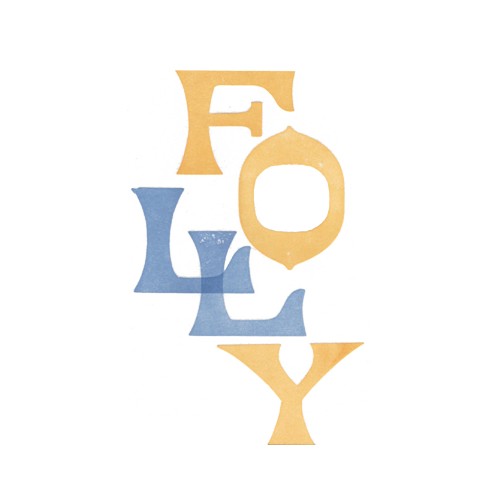Hubert Walter Wandesford Fenwick, architect turned architectural historian and writer, was a regular contributor to The Scots Magazine, a monthly publication that claims to be the oldest magazine in Britain still in publication, having been launched in 1739. In 1965 Fenwick wrote an article about ‘Features and Follies’, in Scotland, illustrated with his own very attractive colour sketches.

Fenwick (1916-2003) starts, as so many writers on architectural curiosities do, with the thorny question of how to define a folly. He quotes the Universal English Dictionary which states that a folly is a ‘useless, fantastic structure, built from foolish caprice’, but he does not think it is an accurate description. He then launches into an analogy which the Flâneuse rather likes: ‘… after all, most oil paintings are useless, unless they happen to cover a gap or a dirty mark on the wall. Most paintings are fantastic, some even foolish, but they, nevertheless, tend to make life more interesting and civilised, and they express an aspect of the human spirit.’ It is, he concludes, the same with a good folly. He is however strict about his classifications of what is a folly and what is a feature.

McCaig’s tower at Oban, for instance, is a feature, not a folly, as it was originally intended as an ’eminently practical’ museum. According to Fenwick’s rules, the Wallace Monument at Stirling is a commemorative tower, not a folly.

The buildings that do qualify as folly in Fenwick’s opinion are a particularly lovely bunch, and amongst his selection are The Whim at Blair which he describes as a ‘dummy fort’, the sham ruin on Balcarres Crag in Fife, the tower on Kinnoul Hill in Perth which was built to show that the Tay was the equal of the Rhine, Ossian’s Temple (aka the Hermitage) at Dunkeld, the Craigiehall Temple and Hume Castle which is a ‘magnificent fake’. The Pineapple at Dunmore is included for its ‘extremely clever and imaginative design’.

Fenwick wrote the piece in response to a book about follies which he had recently read. He felt cheated as it contained ‘less than a dozen Scottish examples’ (actually there are exactly twelve), and only two that ‘could legitimately be so designated’. He failed to name the book, but he does give the clue that it was produced by a ‘petrol firm’, so we can be sure it was Follies, written by Ella Hatt, beautifully illustrated by Paul Sharp, and published by National Benzole in 1963 (there’s more about that book here.) In case you are wondering, the two true follies that Fenwick approved of in the book were the sham on Balcarres Crag and the Hermitage at Dunkeld.

You can read more about the history of the Scots Magazine here.
Thank you for reading. Your thoughts are always welcome so please scroll down to the comments box at the foot of the page if you would like to get in touch. Don’t forget that clicking on the highlighted text will take you to further folly stories.






Moira Garland says:
I like Fenwick’s “an aspect of the human spirit”.
Editor says:
Hello Moira. I’m always excited to find new descriptions and definitions of folly, and I really admired Fenwick’s summary.
TOM GARDNER says:
TOM (NYC)
YOUR OFFERING HAS A TWO FOLD NATURE; RESULTING IN AN ALMOST PERFECT COMBINATION OF – TWO ART FORMS.
1. ON THE ONE SIDE IS – THE ‘ARTIST’S’ RENDERING OF THE ‘FOLLY’ ON CANVAS.
2. THE OTHER: THE BRICK AND TIMBER OF THE REALITY (OR – WHAT’S LEFT).
IN EITHER CASE, THERE IS A THIRD FACET; UNIQUE TO EACH VIEWER.
THE ROMANCE THAT ONE CAN ‘IMAGINE’ – VIA THESE ‘REMAINS’ –
IN THE ART FORM OF – ‘THE MIND’.
GIVES NEW MEANING TO … DREAM ON!
CHEERS
TOM
Editor says:
Good morning Tom. I particularly liked how the author of the article pointed put that follies, like paintings, raise the spirits and make life more interesting. I wholeheartedly agree.